-
 Bitcoin
Bitcoin $106,731.2224
-1.05% -
 Ethereum
Ethereum $2,444.9804
-1.20% -
 Tether USDt
Tether USDt $1.0003
0.01% -
 XRP
XRP $2.1882
0.09% -
 BNB
BNB $651.1435
-0.61% -
 Solana
Solana $148.3252
-2.09% -
 USDC
USDC $1.0000
0.01% -
 TRON
TRON $0.2787
0.55% -
 Dogecoin
Dogecoin $0.1598
-3.16% -
 Cardano
Cardano $0.5520
-2.43% -
 Hyperliquid
Hyperliquid $39.0960
-2.64% -
 Bitcoin Cash
Bitcoin Cash $516.9519
2.98% -
 Sui
Sui $2.7011
-2.95% -
 Chainlink
Chainlink $13.0582
-1.71% -
 UNUS SED LEO
UNUS SED LEO $8.9250
-2.53% -
 Stellar
Stellar $0.2359
-0.18% -
 Avalanche
Avalanche $17.3856
-3.73% -
 Toncoin
Toncoin $2.8095
-3.56% -
 Shiba Inu
Shiba Inu $0.0...01121
-1.95% -
 Litecoin
Litecoin $85.2795
-0.85% -
 Hedera
Hedera $0.1471
-2.15% -
 Monero
Monero $319.8004
1.12% -
 Dai
Dai $1.0001
0.01% -
 Ethena USDe
Ethena USDe $1.0001
0.02% -
 Bitget Token
Bitget Token $4.5344
-1.07% -
 Polkadot
Polkadot $3.3224
-2.96% -
 Uniswap
Uniswap $6.9697
-2.75% -
 Aave
Aave $266.1658
-2.25% -
 Pepe
Pepe $0.0...09414
-3.41% -
 Pi
Pi $0.4913
-3.29%
How to create a Bitcoin wallet address for free
Bitcoin wallet addresses are unique identifiers for receiving and sending Bitcoins, derived from a private key that must be kept secret to secure your funds.
Apr 07, 2025 at 12:36 am
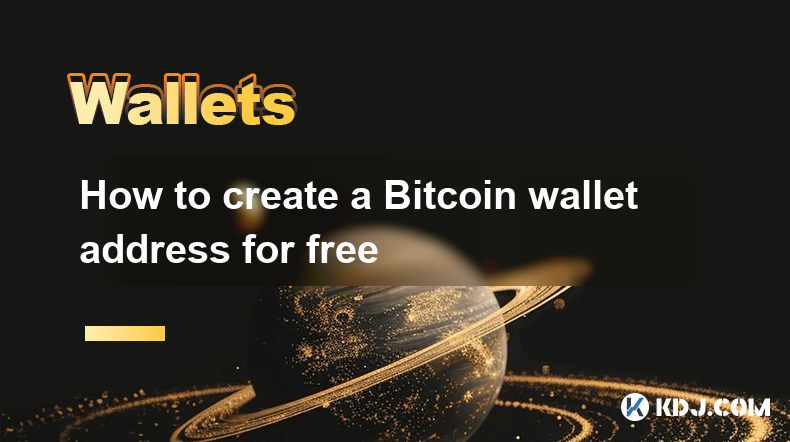
Understanding Bitcoin Wallet Addresses
Before diving into the creation process, it's crucial to understand what a Bitcoin wallet address is. It's essentially a unique identifier, like a bank account number, used to receive and send Bitcoins. Unlike a bank account, however, it doesn't hold your Bitcoin directly. Instead, it represents a public key derived from your private key, which is crucial for securing your funds. Losing your private key means losing access to your Bitcoin. Never share your private key with anyone.
Choosing a Bitcoin Wallet Type
Several types of Bitcoin wallets exist, each with its advantages and disadvantages. The best choice depends on your technical skills and security needs.
Software Wallets: These are applications installed on your computer or mobile device. They offer greater control but are vulnerable if your device is compromised. Examples include Electrum and Exodus.
Hardware Wallets: These are physical devices that store your private keys offline. They are considered the most secure option, offering excellent protection against hacking and malware. Ledger and Trezor are popular choices.
Web Wallets: These are online wallets accessible through a web browser. They are convenient but carry higher security risks due to reliance on third-party servers. Use only reputable providers.
Paper Wallets: These are printed documents containing your public and private keys. While offering offline security, they are vulnerable to physical damage or loss.
Creating a Bitcoin Wallet Address: Step-by-Step Guide (Software Wallet Example)
This guide uses a software wallet as an example. The exact steps might vary slightly depending on the specific wallet you choose. Remember to download wallets only from official sources to avoid malware.
Download and Install: Download the chosen software wallet from its official website. Verify the authenticity of the download to avoid malicious software.
Create a New Wallet: Launch the wallet and follow the on-screen instructions to create a new wallet. You'll typically be prompted to create a strong password.
Backup Your Seed Phrase: This is the most crucial step. Your seed phrase (a list of words) is your backup key. Write it down on paper, store it securely offline, and never share it with anyone. Losing your seed phrase means irreversible loss of your Bitcoin.
Generate a Receiving Address: Once your wallet is set up, you can generate a new Bitcoin receiving address. This address will be displayed in your wallet. You can use this address to receive Bitcoin from others.
Creating a Bitcoin Wallet Address: Step-by-Step Guide (Hardware Wallet Example)
Hardware wallets generally involve a more physical process.
Unbox and Connect: Unbox your hardware wallet and connect it to your computer using the provided cable.
Set up the Device: Follow the on-screen instructions to set up your hardware wallet. This will involve creating a PIN and backing up your seed phrase. Treat this seed phrase with extreme caution; it's your only way to recover your funds.
Generate a Receiving Address: After setup, the device will display a Bitcoin receiving address. You can use this address to receive Bitcoin. The address is usually displayed on the hardware wallet's screen and is also shown in the associated software.
Understanding the Security Implications
Regardless of the wallet type, security is paramount. Here's a summary of best practices:
Strong Passwords: Use strong, unique passwords for your wallets. Avoid using easily guessable passwords.
Regular Updates: Keep your software wallets updated to the latest versions to benefit from security patches.
Two-Factor Authentication (2FA): Enable 2FA whenever possible to add an extra layer of security.
Antivirus Software: Ensure your computer has up-to-date antivirus software, especially if using a software wallet.
Offline Storage: Store your seed phrase offline and in a secure location, away from potential hazards.
Frequently Asked Questions
Q: Is it safe to create a Bitcoin wallet online?
A: Creating a wallet online carries risks. Use only reputable websites and be wary of phishing scams. Hardware wallets offer the best security.
Q: Can I create multiple Bitcoin addresses from one wallet?
A: Yes, most wallets allow you to generate multiple receiving addresses from a single wallet. This enhances privacy and security.
Q: What happens if I lose my seed phrase?
A: Losing your seed phrase means you lose access to your Bitcoin. There is no way to recover your funds without it.
Q: Are there any fees associated with creating a Bitcoin wallet?
A: Creating a Bitcoin wallet itself is usually free. However, there might be transaction fees when sending or receiving Bitcoin.
Q: How do I choose the right type of Bitcoin wallet?
A: The best wallet type depends on your technical skills and security needs. Beginners might prefer user-friendly software wallets, while advanced users may opt for hardware wallets for enhanced security.
Q: What is the difference between a public and private key?
A: Your public key is like your bank account number – it's used to receive Bitcoin. Your private key is like your bank password – it's essential for controlling and spending your Bitcoin. Never share your private key.
Q: Can I use the same Bitcoin address multiple times?
A: Yes, you can reuse a Bitcoin address. However, using a new address for each transaction enhances your privacy.
Disclaimer:info@kdj.com
The information provided is not trading advice. kdj.com does not assume any responsibility for any investments made based on the information provided in this article. Cryptocurrencies are highly volatile and it is highly recommended that you invest with caution after thorough research!
If you believe that the content used on this website infringes your copyright, please contact us immediately (info@kdj.com) and we will delete it promptly.
- Powell, Stablecoin Regulation, and Circle's Bold Move: A New York Minute on Crypto's Future
- 2025-07-02 02:30:12
- Ethereum Price, Tom Lee, and Bitcoin: A New Era for Crypto?
- 2025-07-02 02:30:12
- Hoskinson, Ripple, Cardano DeFi: A New Era of Collaboration?
- 2025-07-02 02:35:12
- BlockDAG, ALGO, and the Crypto Trends Shaping 2025
- 2025-07-02 01:50:12
- Cold Wallet, Token, Gains: Is CWT the Smartest Crypto Move?
- 2025-07-02 01:10:12
- Pi Coin's Rocky Ride: Support Levels, Recovery Timeline, and What the Experts Are Saying
- 2025-07-02 01:10:12
Related knowledge
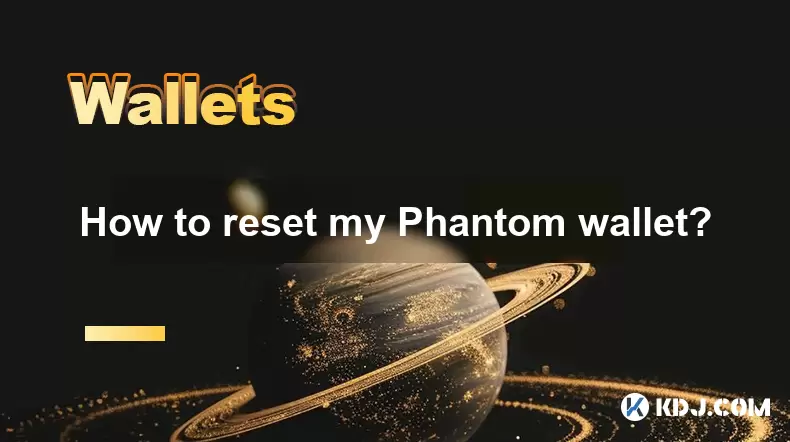
How to reset my Phantom wallet?
Jul 02,2025 at 12:36am
Understanding the Need for Resetting Your Phantom WalletIf you're using a Phantom wallet, you may encounter situations where resetting your wallet becomes necessary. This could be due to forgotten passwords, seed phrase issues, or account corruption. Phantom is a non-custodial wallet primarily used for interacting with the Solana blockchain, and it stor...
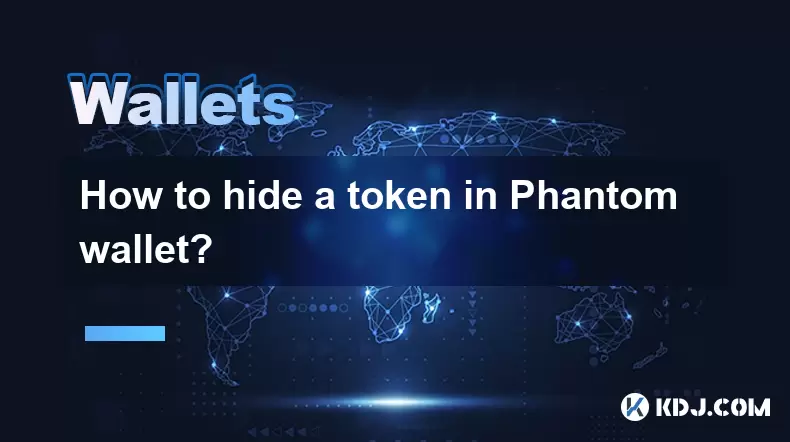
How to hide a token in Phantom wallet?
Jul 01,2025 at 05:49pm
Understanding the Phantom Wallet InterfacePhantom wallet is a popular non-custodial wallet used primarily for interacting with the Solana blockchain. It allows users to store, send, receive, and manage various tokens, including both fungible and non-fungible tokens (NFTs). Before attempting to hide a token, it's essential to understand how the wallet in...
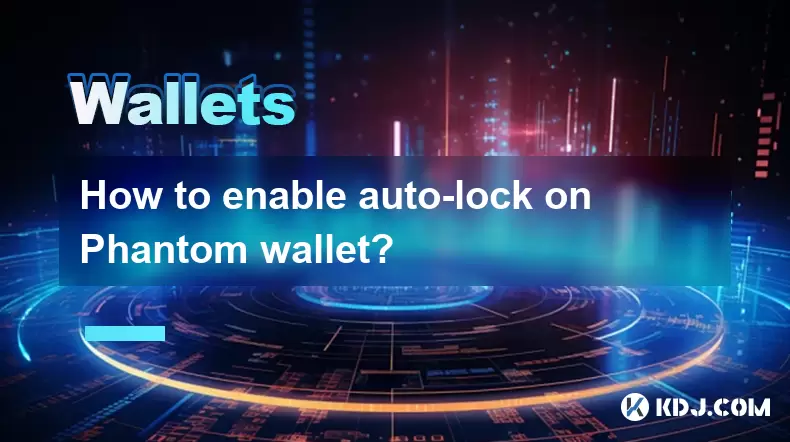
How to enable auto-lock on Phantom wallet?
Jul 01,2025 at 04:01pm
What is Auto-Lock in Phantom Wallet?Phantom wallet is a popular non-custodial cryptocurrency wallet used primarily for interacting with the Solana blockchain. One of its security features includes the ability to set an auto-lock timer, which ensures that the wallet locks itself automatically after a period of inactivity. Auto-lock enhances security by p...
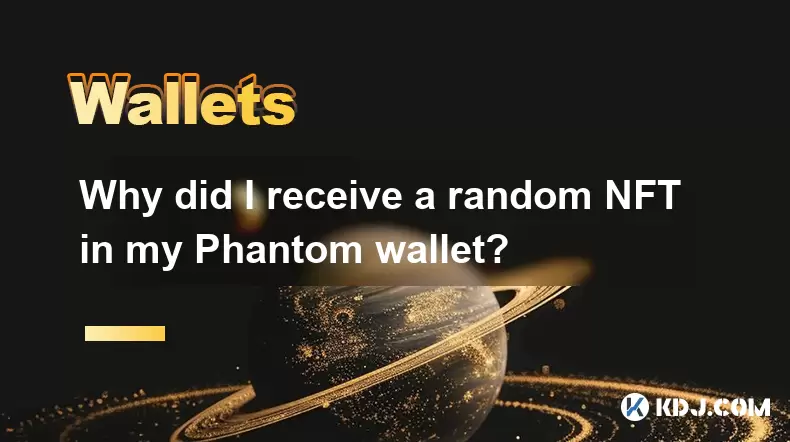
Why did I receive a random NFT in my Phantom wallet?
Jul 01,2025 at 09:00pm
Receiving an Unexpected NFT in Your Phantom WalletIf you've recently opened your Phantom wallet and noticed an unfamiliar NFT appearing in your collection, you're not alone. Many users have reported receiving random or unsolicited non-fungible tokens, often without any prior interaction with the project or sender. This phenomenon has become increasingly...
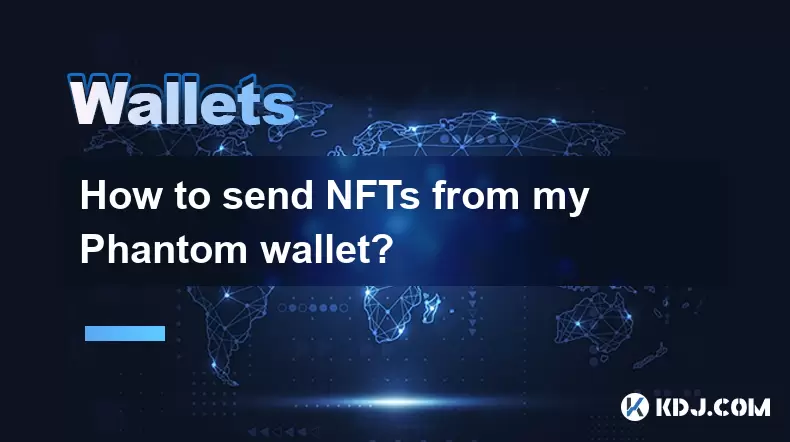
How to send NFTs from my Phantom wallet?
Jul 02,2025 at 03:15am
What is Phantom Wallet and Why Use It for NFT Transfers?Phantom wallet is a non-custodial cryptocurrency wallet primarily used for interacting with the Solana blockchain. It supports both tokens and NFTs, making it a popular choice among users who engage in decentralized finance (DeFi) or digital collectibles. The interface is user-friendly, allowing ev...
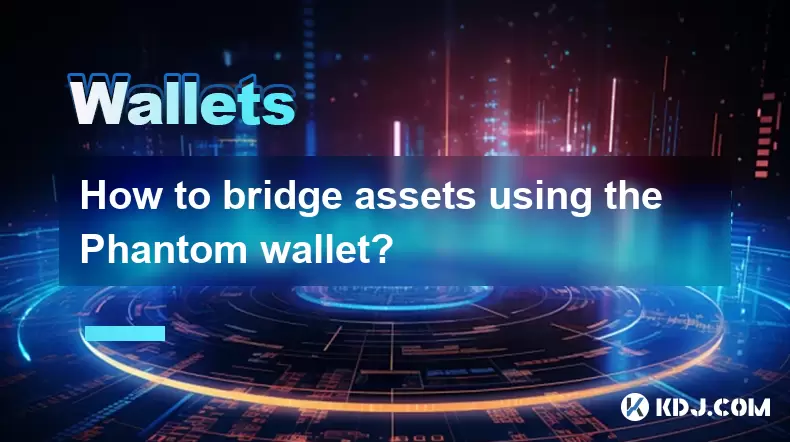
How to bridge assets using the Phantom wallet?
Jul 02,2025 at 02:50am
Understanding the Basics of Asset BridgingAsset bridging refers to the process of transferring digital assets from one blockchain network to another. This functionality is crucial in a multi-chain ecosystem where users may need to move tokens between different networks for various purposes, such as accessing decentralized applications (dApps), participa...

How to reset my Phantom wallet?
Jul 02,2025 at 12:36am
Understanding the Need for Resetting Your Phantom WalletIf you're using a Phantom wallet, you may encounter situations where resetting your wallet becomes necessary. This could be due to forgotten passwords, seed phrase issues, or account corruption. Phantom is a non-custodial wallet primarily used for interacting with the Solana blockchain, and it stor...

How to hide a token in Phantom wallet?
Jul 01,2025 at 05:49pm
Understanding the Phantom Wallet InterfacePhantom wallet is a popular non-custodial wallet used primarily for interacting with the Solana blockchain. It allows users to store, send, receive, and manage various tokens, including both fungible and non-fungible tokens (NFTs). Before attempting to hide a token, it's essential to understand how the wallet in...

How to enable auto-lock on Phantom wallet?
Jul 01,2025 at 04:01pm
What is Auto-Lock in Phantom Wallet?Phantom wallet is a popular non-custodial cryptocurrency wallet used primarily for interacting with the Solana blockchain. One of its security features includes the ability to set an auto-lock timer, which ensures that the wallet locks itself automatically after a period of inactivity. Auto-lock enhances security by p...

Why did I receive a random NFT in my Phantom wallet?
Jul 01,2025 at 09:00pm
Receiving an Unexpected NFT in Your Phantom WalletIf you've recently opened your Phantom wallet and noticed an unfamiliar NFT appearing in your collection, you're not alone. Many users have reported receiving random or unsolicited non-fungible tokens, often without any prior interaction with the project or sender. This phenomenon has become increasingly...

How to send NFTs from my Phantom wallet?
Jul 02,2025 at 03:15am
What is Phantom Wallet and Why Use It for NFT Transfers?Phantom wallet is a non-custodial cryptocurrency wallet primarily used for interacting with the Solana blockchain. It supports both tokens and NFTs, making it a popular choice among users who engage in decentralized finance (DeFi) or digital collectibles. The interface is user-friendly, allowing ev...

How to bridge assets using the Phantom wallet?
Jul 02,2025 at 02:50am
Understanding the Basics of Asset BridgingAsset bridging refers to the process of transferring digital assets from one blockchain network to another. This functionality is crucial in a multi-chain ecosystem where users may need to move tokens between different networks for various purposes, such as accessing decentralized applications (dApps), participa...
See all articles

























































































